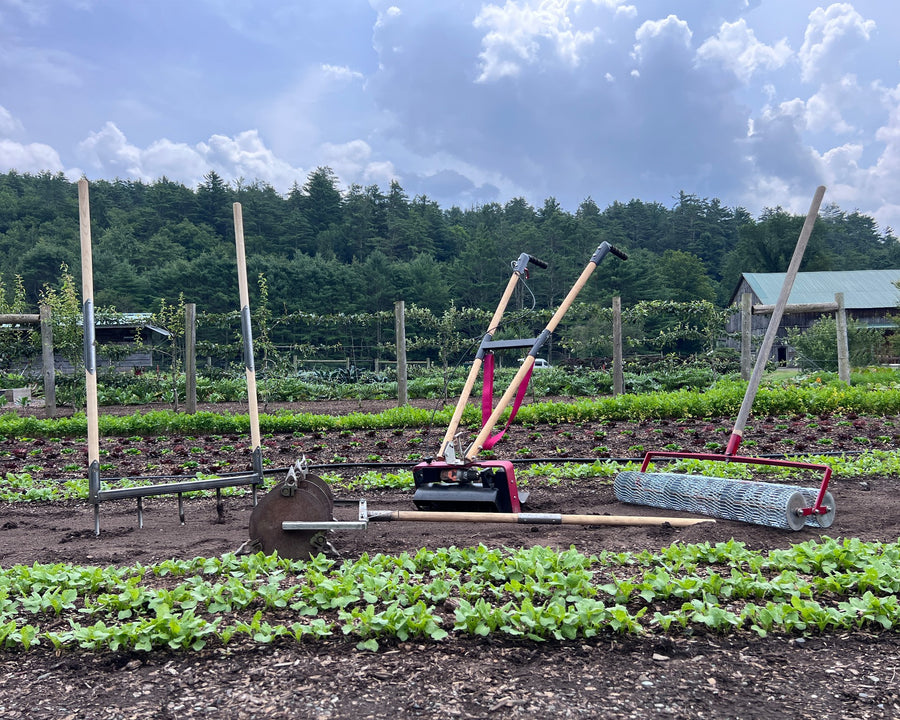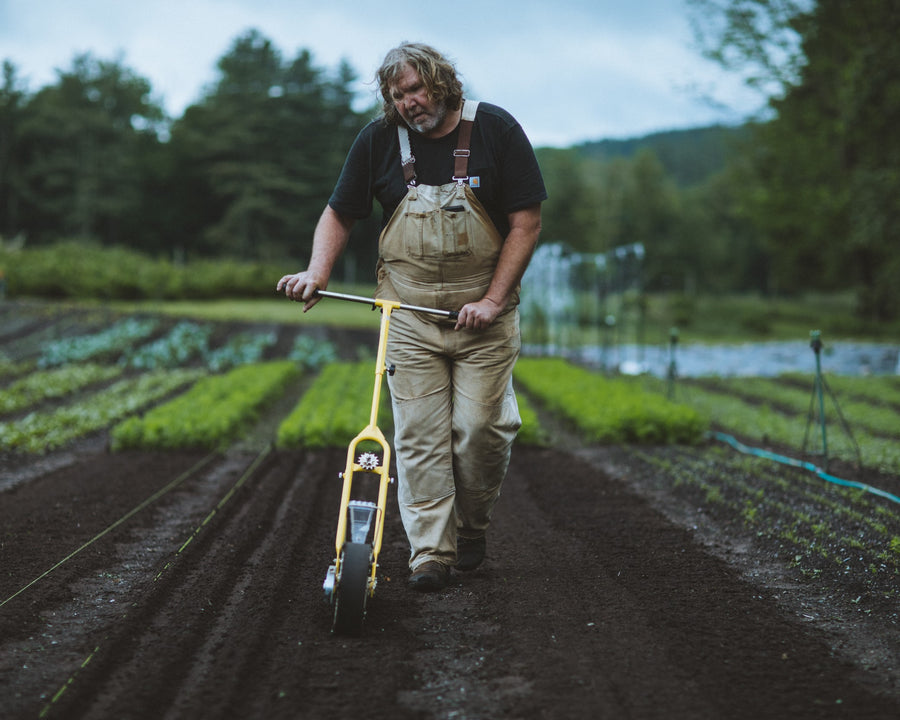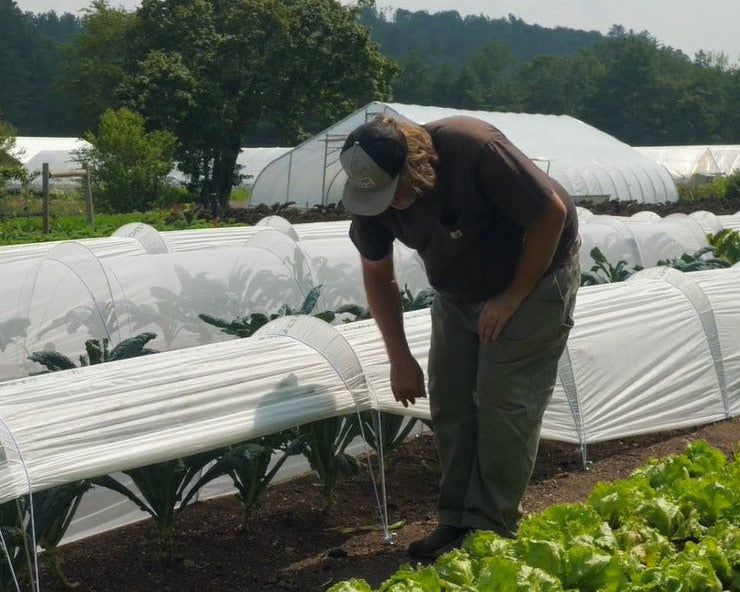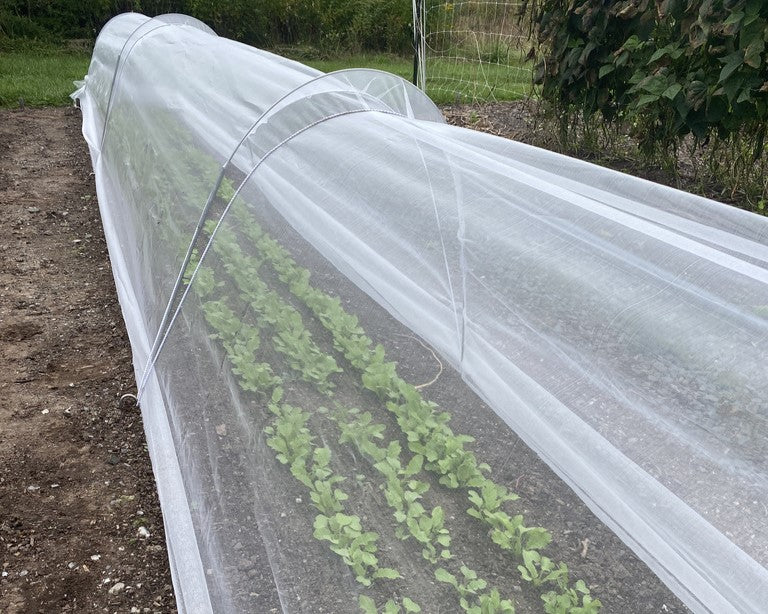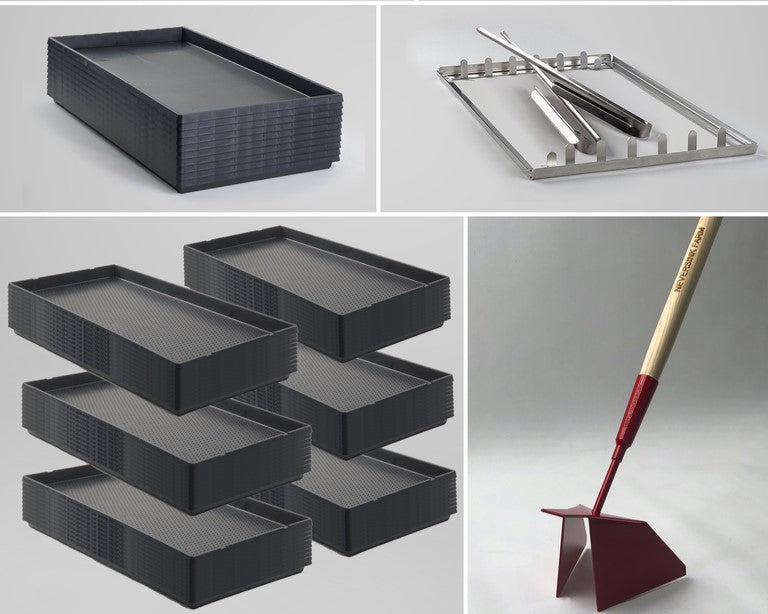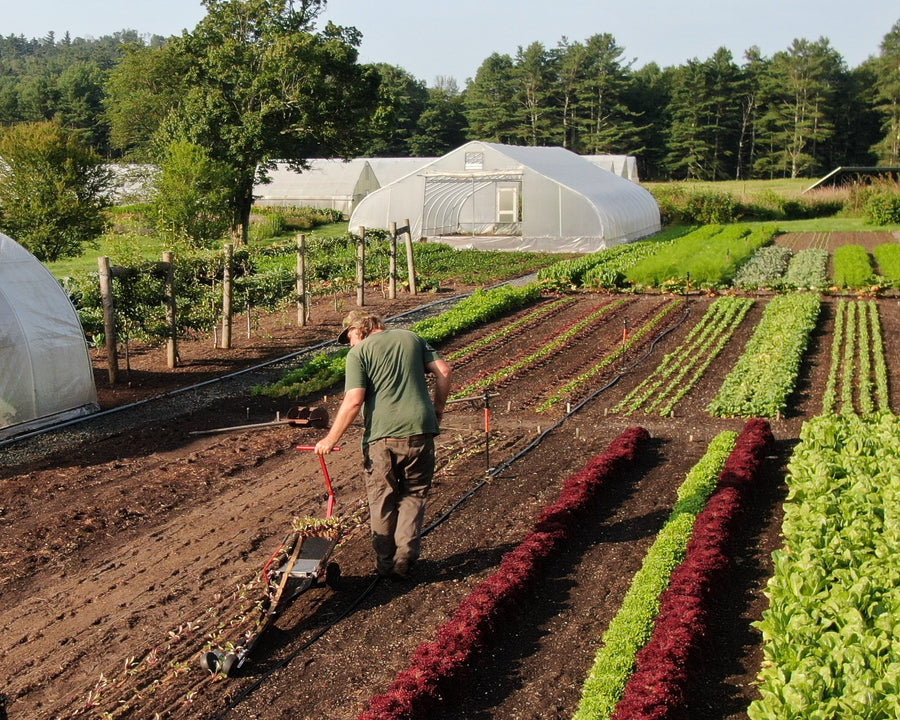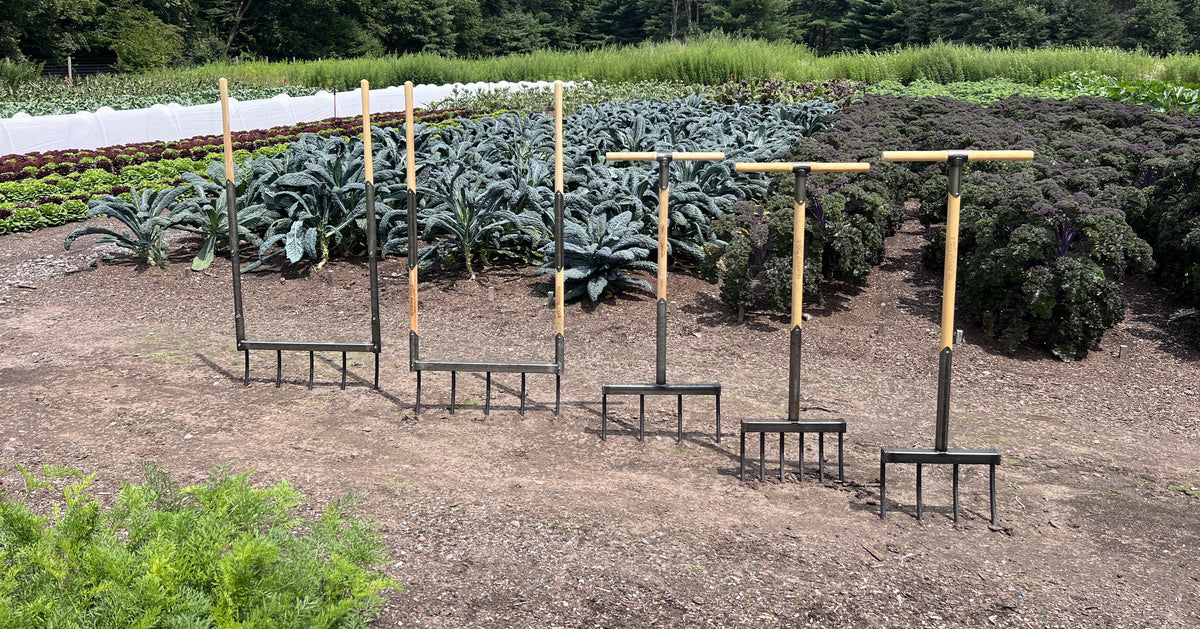

Whether you're starting a no-till garden, managing a market farm, or simply looking for a more efficient and effective way to prepare your beds, the broadfork is one of the most valuable tools you can own. The broadfork is designed to aerate soil without disturbing its structure and without destroying your back.
So if you’re wondering whether a broadfork belongs on your tool rack, this guide will walk you through the “why” and “how” of using one effectively.
Why Use a Broadfork?
The broadfork is a human-powered tool designed to loosen and aerate soil without turning it over. Unlike tillers or shovels, it doesn’t disrupt the delicate structure that makes a living soil system work.
Instead of mixing the soil, the broadfork lifts and cracks it, creating space for air, water, and roots to move—while keeping soil layers intact.
Benefits:
- Preserves soil biology: No inverting means fungi, bacteria, and worm networks stay undisturbed.
Reduces compaction: Loosens dense or crusted soils.
Supports long-term soil health: Improves structure and drainage.
Ideal for permanent beds: Perfect for market farms or home gardens using no-dig or low-till systems.
How to Use a Broadfork (Step-by-Step)
Using a broadfork is intuitive, but technique matters. Here’s how to do it right:
1. Choose the Right Broadfork
Choose a broadfork suited to your height and soil conditions. A general guideline: the handles should reach chest level.
Also consider the type of tines—strong, hand-forged round tines penetrate more easily and will not bend.
2. Start at One End of Your Bed
Position yourself at the start of your bed. It’s best to work methodically from one end to the other, maintaining consistent spacing to ensure full coverage.
3. Insert the Tines
With your broadfork in hand, step on the cross bar and let your body weight push the tines into the ground. Drive them in until the crossbar nearly touches the soil surface.
If your soil is particularly hard or compacted, you may need to shift your weight side to side or use your arms slightly to help drive it in.
4. Rock Back to Aerate
Once the tines are fully inserted, pull back on the handles to lift and crack the soil. This loosens and aerates without flipping the soil. You’re not digging—you’re lifting. How far back you have to pull the broadfork will depend on the particular soil being engaged.
5. Step Forward and Repeat
Lift the broadfork out of the soil and move forward about the width of the tines. Repeat the process until you’ve worked the entire bed.

Choosing the Right Broadfork for the Job
Not all broadforks are the same. Here's how to match the tool to your soil and needs:
Steel handles are better for heavily compacted or rocky soils, offering strength and leverage.
Wood handles are lighter and more comfortable, ideal for softer ground.
- Round tines are essential for optimal aeration —flat blades tend to slice through soil rather than lift and crack it. (More on this on our product page .)
Using a broadfork is one of the most effective ways to loosen and aerate your soil while preserving its natural structure. With the right technique, it’s a simple, low-impact step that supports long-term soil health and stronger crops. Incorporate it into your bed prep routine, and you’ll set the stage for a healthier, more productive garden season after season.
Looking to upgrade your soil prep system? Invest in a quality broadfork with hand-forged, round, steel tines and a durable frame. It’s likely to be the last one you ever need to buy!
NEVERSINK TOOLS- THE GOAT™ BROADFORK
